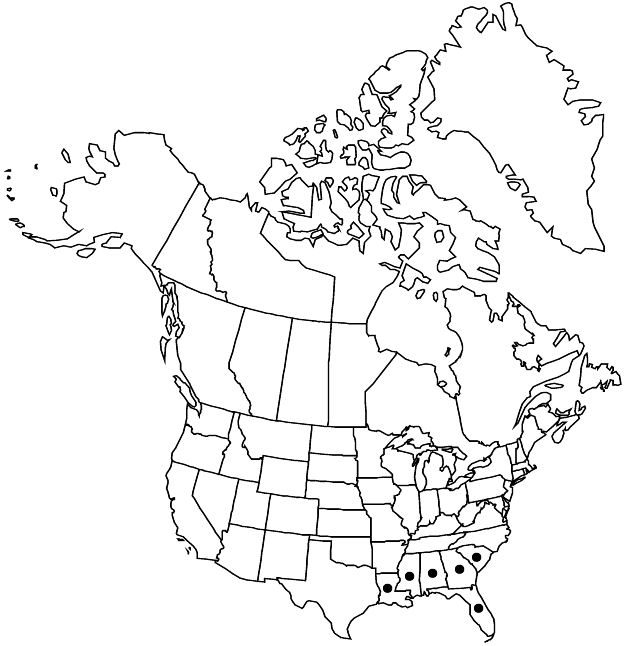Acalypha setosa
Hist. Fis. Cuba 11: 204. 1850.
Herbs, annual, 3–5 dm, monoecious. Stems erect, sparsely pubescent. Leaves: petiole 1–7 cm; blade ovate, 2.5–10 × 1.5–8 cm, base broadly obtuse to rounded or truncate, margins serrate, apex acuminate. Inflorescences unisexual, axillary (staminate) and terminal (pistillate; sometimes on short lateral branches, appearing axillary); staminate peduncle 0.5–0.7 cm, fertile portion 0.5–1.5 cm; pistillate peduncle 0.1–0.5 cm, fertile portion 3–12 × 0.7–1 cm; allomorphic pistillate flowers common, near apices of pistillate inflorescences and mixed with flowers in staminate inflorescences. Pistillate bracts (normal flowers) loosely arranged (inflorescence axis visible between bracts), 5–7 × 3–4 mm, abaxial surface glabrous; lobes 7–9 (–13), linear, nearly bract length, muricate; of allomorphic flowers on pistillate inflorescences like those of normal flowers, on staminate inflorescences absent. Pedicels of allomorphic flowers rudimentary. Pistillate flowers: pistil 3-carpellate (normal flowers), 1 (–3) -carpellate (allomorphic flowers); styles multifid or laciniate. Capsules smooth, sparsely pubescent; allomorphic fruits oblate ellipsoidal, longitudinally ridged, an irregular flange on each side, 1.4–1.7 × 1.5–2 mm, smooth, puberulent. Seeds 1.2–1.4 mm, minutely pitted.
Phenology: Flowering and fruiting summer–fall.
Habitat: Disturbed areas.
Elevation: 0–100 m.
Distribution

Introduced; Ala., Fla., Ga., La., Miss., S.C., c, s Mexico, West Indies, Central America, n South America
Discussion
Acalypha setosa, indigenous from Mexico to northern South America and the West Indies, was first introduced to the United States in the late 1800s and now occurs sporadically through the southeastern states.
Selected References
None.
Lower Taxa
"elongated" is not a number.No values specified."connate" is not a number. "distinct" is not a number.